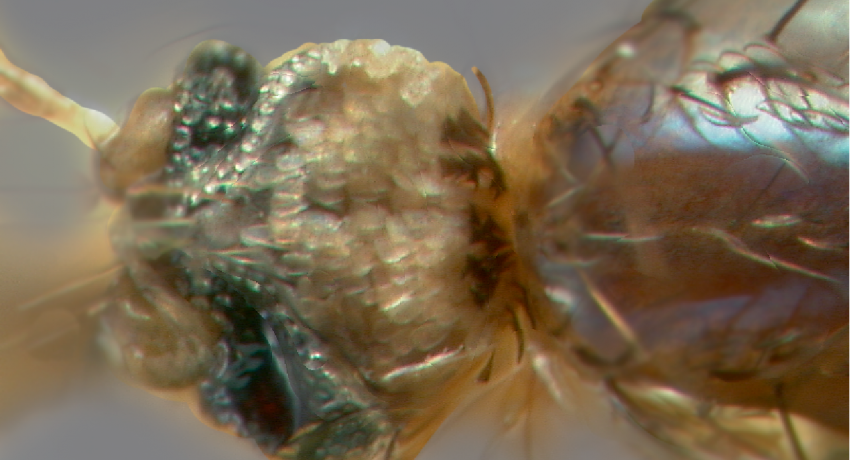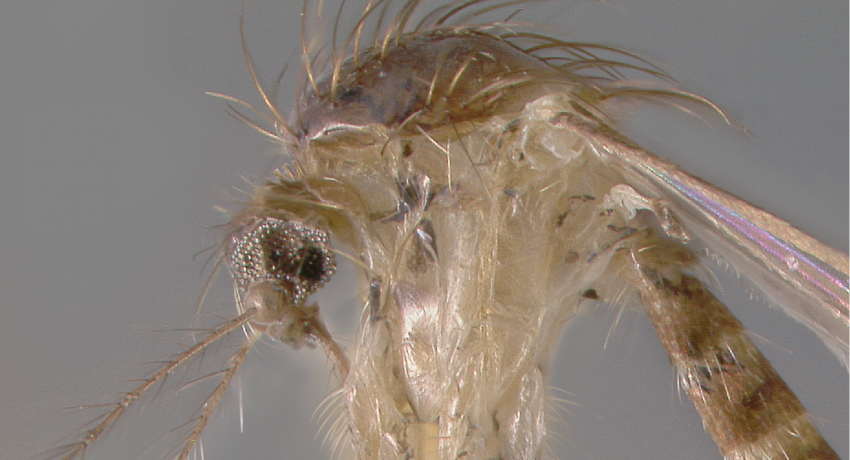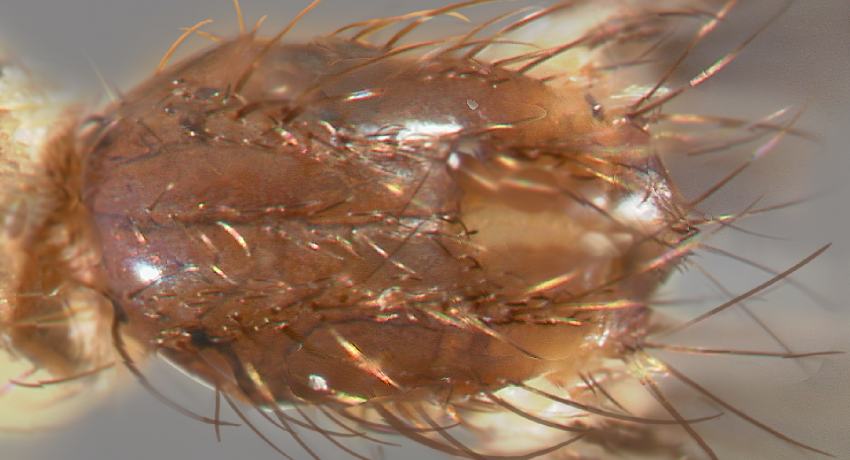AFROTROPICAL, ORIENTAL & PALEARCTIC REGIONS
Generic abbreviation: Fi.
Type species: Uranotaenia minima Theobald (Brunetti 1914: 60)
Etymology: Eugenio Ficalbi
The genus Ficalbia comprises only eight species—Fi. circumtestacea (Theobald), Fi. ichiromiyagii Toma & Higa, Fi. jacksoni Mattingly, Fi. ludlowae Brunetti, Fi. malfeyti (Newstead), Fi. minima (Theobald), Fi. nigra (Theobald), and Fi. uniformis (Theobald). It is probable that more species exist but as Ficalbia are some of the tiniest mosquitoes, they are often overlooked in trap collections or mistaken for ceratopogonids. Ficalbia circumtestacea, Fi. malfeyti, Fi. minima and Fi. nigra, and Fi. uniformis are Afrotropical species, with Fi. circumtestacea and Fi. uniformis also found on Madagascar. Ficalbia ludlowae is found in Indonesia and the Philippines, Fi. jacksoni is endemic to China, and Fi. ichiromiyagii appears restricted to Iriomote Island of the Japanese Ryuku Islands. Ficalbia minima is present across the mainland and islands of the Oriental Region, and through the Pacific islands into Australia.
Interestingly, although Ficalbia is currently placed alongside Mimomyia in the tribe Ficalbiini, recent cladistic analysis of morphological traits suggest that these are not sister taxa.
DIAGNOSTIC CHARACTERS (Click photos to view; mouse over and click large photo to zoom in.)
ADULT (illustrated): Head: Erect head scales restricted to occiput; proboscis of both sexes slightly swollen at tip; flagellomere Flm1 2–6x longer than Flm2. Thorax: Scutellum with narrow scales; acrostichal and dorsocentral setae present; no prespiracular setae, prealar scales or lower mesepimeral setae; postspiracular area bare;. Wing: Alula and upper calypter with fringe of narrow scales. Wing: Vein 1A terminates beyond base of mediocubital crossvein.
LARVA (not illustrated): Head: Distal and basal portions of antenna fused, not articulated; hypostomal suture absent or incomplete. Abdomen: Abdominal seta 12-I present. Terminal segments: Single row of comb scales; seta 1-S inserted near base of siphon; pecten reduced (1–2 spines); saddle complete; seta 4-X with 4 pairs of setae, and sometimes 1–2 extra tiny setae.
TAXONOMIC KEYS
Edwards 1941 (Afrotropical Region)
Hopkins 1952 (Afrotropical Region)
Mattingly 1957a (Indomalayan Area)
Mattingly & Grjebine 1958
da Cunha Ramos & Ribeiro 1975 (Angola)
Rattanarithikul & Harrison et al. 2005 (Thailand)
Rattanarithikul et al. 2006b (Thailand)
![]()
WRBU – Genera – Global – Larva
![]()
WRBU – Genera – Afrotropical – Adult
![]()
WRBU – Genera – Afrotropical – Larva
![]()
WRBU – Genera – Australasian – Adult
![]()
WRBU – Genera – Australasian – Larva
![]()
WRBU – Genera – IndoMalayan – Adult
![]()
WRBU – Genera – IndoMalayan – Larva
![]()
WRBU – Genera – Oriental – Adult
![]()
WRBU – Genera – Oriental – Larva
Exemplar DNA sequences
Ficalbia minima COI: KF564761–63; KF564767
BIONOMICS
Immatures
The bionomics of Ficalbia species remain largely unknown. In Madagascar, Fi. uniformis immatures have been collected in flooded meadows, and marshes and canals with dense vegetation, as well as deep, clear water sites. In Japan, Fi. ichironmiyagii immatures appear restricted to densely vegetated jungle swamps in the undisturbed Otomi swamp forest of Iriomote island.
Adults
Nothing is reported on the biting preferences of Ficalbia, but adults have been collected both in the canopy and lower vegetation at night, suggesting the species may bite animals or birds both in the canopy and at ground level. Two species—Ficalbia modesta and Fi. flavens—have tested positive for MPKV.
*Associated pathogens: This list reports bacteria, viruses, and parasites recovered from, or experimentally passed through this species, and does not imply field vector status.
IMPORTANT REFERENCES (full citations below)
Theobald 1903a: 296 (as genus)
Brunetti 1914: 60 (type species designation)
Edwards 1941 (M, F, P; taxonomy, keys (includes Mimomyia); Afrotropical Region)
Hopkins 1952 (L; taxonomy, key (includes Mimomyia); Afrotropical Region)
Mattingly 1957a: 6 (keys; Indomalayan Area)
Mattingly & Grjebine 1958: 259 (keys)
Belkin 1962 (taxonomy (includes Mimomyia), bionomics; South Pacific)
Mattingly 1971a: 1 (generic restriction)
da Cunha Ramos & Ribeiro 1975: 116 (keys; Angola)
Mattingly 1981 (phylogeny)
Grjebine 1986 (review, taxonomy, bionomics; Madagascar)
Lee et al. 1988b: 75 (review (includes Mimomyia), taxonomy, bionomics, distribution)
Service 1990 (review, taxonomy, bionomics; Afrotropical Region)
Harbach & Kitching 1998 (phylogenetics)
Rattanarithikul & Harrison et al. 2005 (F, L; keys, bionomics; Thailand)
Rattanarithikul et al. 2006b (keys, bionomics; Thailand)
VALID SUBGENERA
None
CURRENT GENERIC SYNONYMS
None
CITED REFERENCES
Belkin, J.N. (1962). The mosquitoes of the South Pacific (Diptera, Culicidae) (Vols. 1 &2). Berkeley, California: University of California Press.
Brunetti, E. (1914). Critical review of genera in Culicidae. Records of the Indian Museum, 10(2), 15–73.
da Cunha Ramos, H., & Ribeiro, H. (1975). Research on the mosquitoes of Angola (Diptera: Culicidae). IX - Genera Toxorhynchites Theo., 1901, Malaya Leicester, 1908, Ficalbia Theo., 1903, Coquillettidia Dyar, 1905, Mansonia Blanchard, 1901, Uranotaenia L. Arribalzaga, 1891, Aedeomyia Theo., 1901, Eretmapodites Theo., 1901 and Culiseta Felt, 1904. Anais do Instituto de Higiene e Medicina Tropical, 2(1–4), 111–141.
Edwards, F.W. (1941). Mosquitoes of the Ethiopian Region. III. Culicine adults and pupae. Bulletin of the British Museum (Natural History) Entomology.
Grjebine, A. (1986). Insectes (Diptères, Culicidae, Culicinae, Ficalbiini). Faune de Madagascar, 68, 1–441.
Harbach, R.E. & Kitching, I.J. (1998). Phylogeny and classification of the Culicidae (Diptera). Systematic Entomology, 23(4), 327–370.
Hopkins, G.H.E. (1952). Mosquitoes of the Ethiopian region. I. Larval bionomics of mosquitoes and taxonomy of culicine larvae (2nd ed.). London, UK: British Museum (Natural History).
Lee, D.J., Hicks, M.M., Debenham, M.L., Griffiths, M., Bryan, J.H., & Marks, E.N. (1988b). The Culicidae of the Australasian region. Volume 9. Commonwealth Department of Health, School of Public Health and Tropical Medicine Monograph Series, 2.
Mattingly, P.F. (1957a). The culicine mosquitoes of the Indomalayan Area. Part I. Genus Ficalbia Theobald. Bulletin of the British Museum (Natural History) Entomology, 1–61.
Mattingly, P.F. (1971a). Contributions to the mosquito fauna of Southeast Asia. XII. Illustrated keys to the genera of mosquitoes (Diptera, Culicidae). Contributions of the American Entomological Institute, 7(4), 1–84.
Mattingly, P.F. (1981). Medical entomology studies - XIV. The subgenera Rachionotomyia, Trichoteptomyia and Tripteroides (Mabinii Group) of genus Tripteroides in the Oriental region (Diptera: Culicidae). Contributions of the American Entomological Institute, 17(5), 1–147.
Mattingly, P.F., & Grjebine, A. (1958). Revision du genre Ficalbia Theobald et discussion de la position systematique des Raavenalites Doucet (Diptera, Culicidae). Memoires de l'Institut Scientifique de Madagascar (E), 9, 259–290.
Rattanarithikul, R., Harrison, B.A., Harbach, R.E., Panthusiri, P., & Coleman, R.E. (2006b). Illustrated keys to the mosquitoes of Thailand. IV. Anopheles. Southeast Asian Journal of Tropical Medicine and Public Health, 128 (Supplement 2), 2.
Rattanarithikul, R., Harrison, B.A., Panthusiri, P., & Coleman, R.E. (2005). Illustrated keys to the mosquitoes of Thailand. I. Background; geographic distribution; lists of genera, subgenera, and species; and a key to the genera. Southeast Asian Journal of Tropical Medicine and Public Health, 36(1), 1–80.
Service, M.W. (1990). Handbook to the Afrotropical toxorhynchitine and culicine mosquitoes, excepting Aedes and Culex. British Museum (Natural History).
Theobald, F.V. (1903a). A monograph of the Culicidae of the World (Vol. 3). London: British Museum (Natural History). 359pp
CITE THIS PAGE
Walter Reed Biosystematics Unit (Year). Ficalbia genus page. Walter Reed Biosystematics Unit Website, http://wrbu.si.edu/vectorspecies/genera/ficalbia, accessed on [date (e.g. 03 February 2020) when you last viewed the site].







